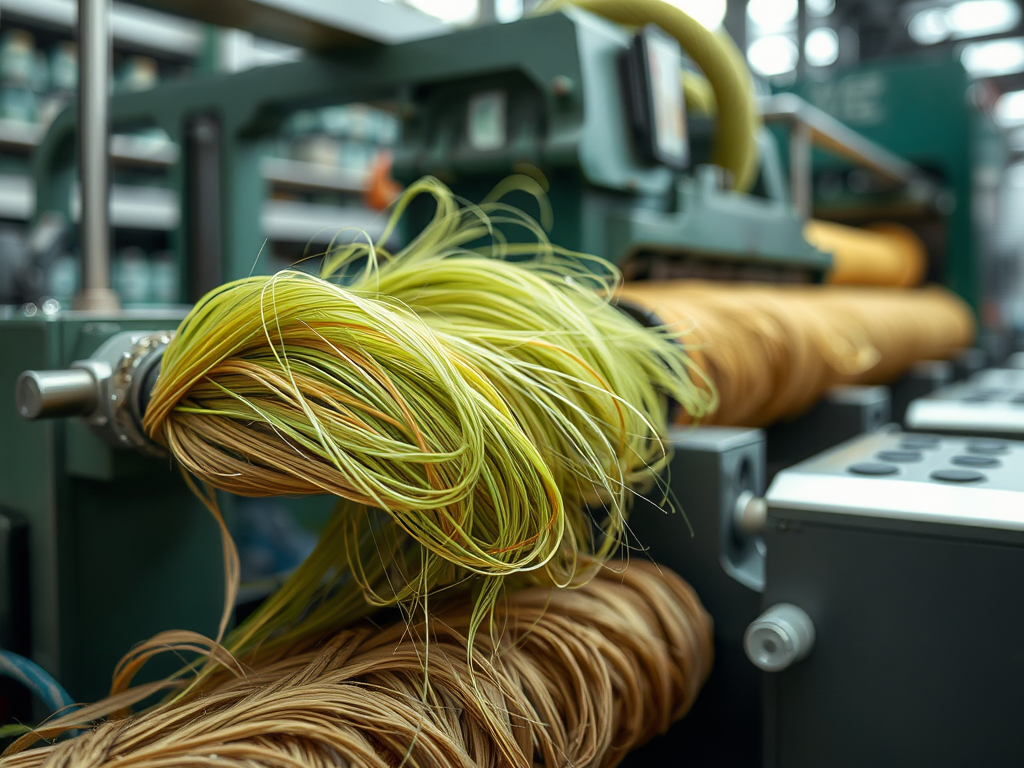Can Nylon Be Recycled? Exploring Its Second Life in Fashion
Nylon, a synthetic marvel, has revolutionized various industries since its inception. As one of the most versatile materials, it has found its way into clothing, accessories, and even home furnishings. Yet as the world becomes increasingly aware of environmental issues, questions arise about the sustainability of such fabrics. The practice of recycling nylon is pivotal in ensuring that this popular material doesn’t end up contributing to the ever-growing landfill crisis. In this article, we will explore the viability of recycling nylon, the processes involved, and its promising second life in fashion.
The Nature of Nylon

Nylon is a polyamide, consisting of repeated units linked by amide bonds. This synthetic fabric is prized for its strength, elasticity, and resistance to wear and tear. The distinction between virgin and recycled nylon is important; while virgin nylon is produced from petrochemicals, recycled nylon is made from discarded products, primarily fishing nets and fabric scraps. This not only minimizes waste but also reduces reliance on natural resources.
Common uses of nylon in the fashion industry range from high-performance sportswear to elegant evening dresses. Its quick-drying properties make it a go-to choice for activewear, while its ability to hold color and shape makes it ideal for more fashion-forward designs. The adaptability of nylon allows designers to create innovative products, catering to various consumer needs.
The Environmental Impact of Nylon Production

The production of nylon is known to be resource-intensive, requiring significant amounts of energy and natural resources. The process contributes to a considerable carbon footprint, impacting climate change and environmental degradation. Additionally, the manufacturing processes often produce harmful emissions, releasing pollutants into the air and water. Not only are these aspects detrimental to the planet, but they also challenge the notion of “fast fashion,” where clothing is manufactured quickly and inexpensively without regard for sustainability.
To put things in perspective, here are some critical points regarding nylon’s environmental footprint:
- Energy consumption: Producing nylon can consume up to 10 times more energy than creating natural fibers like cotton.
- Water usage: Manufacturing nylon requires large volumes of water, leading to scarcity in vulnerable regions.
- Pollution: Chemical runoff from nylon production can contaminate ecosystems and harm aquatic life.
Recycling Nylon: The Process
Recycling nylon involves several stages, which transform waste materials into usable fabric. The process usually begins with the collection of discarded nylon items, such as worn-out garments or fishing nets. Once collected, these materials are sorted and cleaned. This is followed by various recycling techniques that can include mechanical and chemical processes, which break down the nylon fibers and convert them into a usable form. The end result is recycled nylon that meets industry standards for quality and performance.
| Recycling Method | Description |
|---|---|
| Mechanical Recycling | Involves shredding the nylon materials and re-spinning them into new fibers. |
| Chemical Recycling | Breaks down nylon at the molecular level to produce basic chemicals used for new nylon production. |
Despite the advancements in recycling technologies, certain challenges remain prevalent. The contamination and degradation of nylon fibers during recycling can impact the quality of the final product. Additionally, not all recycling facilities have the capability to process nylon, limiting the options available for consumers and companies alike.
The Role of Brands in Nylon Recycling
Fashion brands play an essential role in promoting the use of recycled nylon. Many leading companies have started incorporating recycled materials into their collections, showcasing sustainable practices that resonate with eco-conscious consumers. This shift to responsible sourcing signifies a broader trend towards sustainability in the fashion industry.
Some examples of brands making strides in recycled nylon include:
- Patagonia: Known for its commitment to sustainability, this outdoor brand creates products using recycled nylon, particularly from fishing nets.
- Adidas: With its Parley range, Adidas incorporates recycled ocean plastic and nylon into its footwear and apparel.
- Everlane: This brand prioritizes transparency and sustainability, featuring collections made from recycled nylon.
These initiatives not only help mitigate nylon waste but also educate consumers about the importance of their choices in fashion. Ultimately, brand commitment and consumer awareness can drive substantial change in the industry.
Benefits of Recycling Nylon
The advantages of recycling nylon extend beyond merely reducing waste. By decreasing reliance on virgin materials, we contribute significantly to preserving natural resources. The circular economy, where products are reused, recycled, and repurposed, is gaining traction as a sustainable model for the fashion industry.
Here are some notable benefits of recycling nylon:
- Reduction of landfill waste: Recycling plays a crucial role in divesting the overflowing landfills.
- Lower energy consumption: Uses less energy than producing new fiber from scratch.
- Contributes to a sustainable fashion cycle: Creates a closed-loop system, promoting environmental responsibility.
Conclusion
The need for recycling nylon is clearer than ever. As the fashion industry wades through the complexities of sustainability, recycling serves as a beacon of hope for the future. Embracing practices that reduce waste and repurpose existing materials can have a profound impact on our environmental footprint. In the grand scheme of things, sustainable practices in the fashion world will pave the way for responsible consumption and production, ensuring that nylon has a second life that benefits both consumers and the planet.
Frequently Asked Questions
- Can all types of nylon be recycled? Not all types of nylon can be recycled, but common forms like nylon 6 and nylon 66 are recyclable through specific processes.
- How can consumers support nylon recycling? Consumers can support brands that use recycled nylon, choose second-hand clothing, and participate in recycling programs.
- Is recycled nylon as durable as virgin nylon? Yes, recycled nylon can offer similar durability and quality to virgin nylon, making it a viable alternative in fashion.
- Are there any alternatives to nylon that are more sustainable? Some alternatives include organic cotton, hemp, and Tencel, which have a lower environmental impact compared to nylon.
- How can I find clothes made from recycled nylon? Many brands now label their products as containing recycled materials; you can also search for sustainable fashion retailers online.


